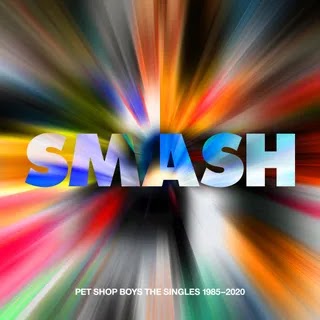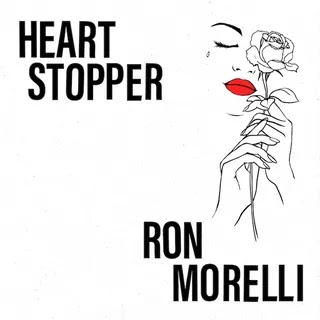The Montreal producer fondly glances back at his formative musical memories of the late 1990s: commercial electronica and alternative rock, in all their occasionally kitschy glory.
For those in the know, commercial “electronica” was always a sham: a marketing scheme masquerading as a genre that haphazardly threw together artists and scenes which often had little to do with one another. Originally used in the early 1990s to describe a wide swath of experimental techno, the term was quickly co-opted by the American music industry, which hoped to capitalize on the success of European artists like Fatboy Slim, Daft Punk, the Prodigy, and the Chemical Brothers and break the sound into the U.S. pop charts. (The fact that these artists were all riffing on styles that had originated years earlier in Black and brown communities in cities like Chicago, Detroit, and New York makes the electronica push feel like a particularly egregious act of cultural erasure.) In retrospect, it might seem absurd, but for countless young listeners—many of whom likely first encountered this music via their local alternative-rock radio station—electronica was a gateway into a whole new world, or at least a new sound palette. One of those listeners was Mike Silver, a Montreal native who would eventually go on to make music of his own as CFCF.
Memoryland is framed as a “capital-E Electronica album” and a direct homage to the formative sounds he heard in the late ’90s. Few artists would dare to make a record inspired by both Basement Jaxx and Smashing Pumpkins, but Silver has never been afraid to embrace the unfashionable. Genres like Balearic, new age, and smooth jazz are accepted and even celebrated in today’s electronic circuit, but back when he was making records like 2015’s The Colours of Life and 2016’s On Vacation, those styles were practically radioactive. On 2019’s Liquid Colors, he dabbled in drum’n’bass, which is admittedly in the midst of a full-blown revival, but he purposely focused on the music’s least underground strains, excavating the soundtracks of long-shuttered chillout lounges and oxygen bars.
That collision of electronic music with the pop sphere is at the core of Memoryland, and although an element of kitsch runs through it, the album isn’t some sort of extended joke. Electronica clearly meant a lot to Silver, and the first single, “Life Is Perfecto,” feels like a not-so-subtle tribute to Paul Oakenfold and his Perfecto label. (The UK artist was arguably the biggest DJ in the world in the late ’90s; his 1998 release Tranceport sold more than 100,000 copies in the US, a staggering figure at the time for a mix CD.) With its gauzy textures and twinkling melodies, “Life Is Perfecto” isn’t as over the top as Oakenfold’s swashbuckling 2002 crossover hit “Ready Steady Go,” or even his crunchy 1998 rework of Smashing Pumpkins’ “Perfect,” but the song’s dreamy ambience and grunge-pop guitars affectionately echo the era and its largely ahistorical approach to electronic music.
Relatively little of Memoryland is aimed straight at the dancefloor, but the crooked disco-funk loops of “Self Service 1999” nod to Daft Punk and the larger French touch sound, while “Night/Day/Work/Home” is a giddy pop-trance cut that also folds in the same sort of pseudo-serious, vocoder-assisted emoting that made Moby’s “We Are All Made of Stars” an unlikely hit in 2002. Less successful is “After the After,” which impressively channels the breezy vibe and skittering rhythms of late-’90s 2-step garage—think Artful Dodger—but is ultimately held back by the limitations of Silver’s voice.
Silver is no Craig David, but he does a bit of singing on Memoryland, sounding best on “Punksong,” a bouncy, 93-second piece of fuzz-pop that’s reminiscent of alt-rock also-rans like Imperial Teen and Veruca Salt. It’s the most blatantly “rock” moment here, but distortion-licked guitars pop up repeatedly throughout the LP; neither “suburbilude” nor “dirty” crack the two-minute mark, but both could pass as a Sonic Youth outtake. Lush highlight “Model Castings,” a glitch-flecked collaboration with Montreal indie outfit No Joy, sounds like a cross between “Windowlicker”-era Aphex Twin and something a shoegaze band like Chapterhouse might have cooked up. Silver could have played it cool and filled Memoryland with references to Underground Resistance, classic UK jungle, and whatever other ’90s sounds are fashionable at the moment, but he refreshingly doesn’t attempt to front. Clearly he was an alt-rock kid, and his willingness to acknowledge that—along with the blatantly rockist orientation of the electronic music that shaped him—is a big part of why the album is so charming.
Electronica reeks of what some might call inauthenticity, but does that invalidate the connections that Silver—and millions of others like him—forged with the music more than two decades ago? Memoryland seems to indicate that it doesn’t, but the album is more a warm remembrance than a full-blown celebration. Perhaps that’s why the LP’s more introspective tracks are some of its most potent. “Gravure Idol” is a whimsical psychedelic number that’ll surely trigger fond memories for anyone who was blown away when the Orb’s iconic “Little Fluffy Clouds” appeared in that Volkswagen Beetle commercial back in 1998, and “End—Curve of Forgetting” ventures even further into dreamland as it vacillates between new-age soundscapes and beatless trance. Silver is undeniably looking back at electronica through rose-colored glasses—in fairness, his glasses are actually tinted yellow in his latest press photo, which feels far more appropriate for that late-’90s era—and though he can still find joy in the bright colors and Y2K excess of these sounds, he’s also clever enough to recognize just how ridiculous they were in the first place.













%20Music%20Album%20Reviews.webp)


0 comments:
Post a Comment